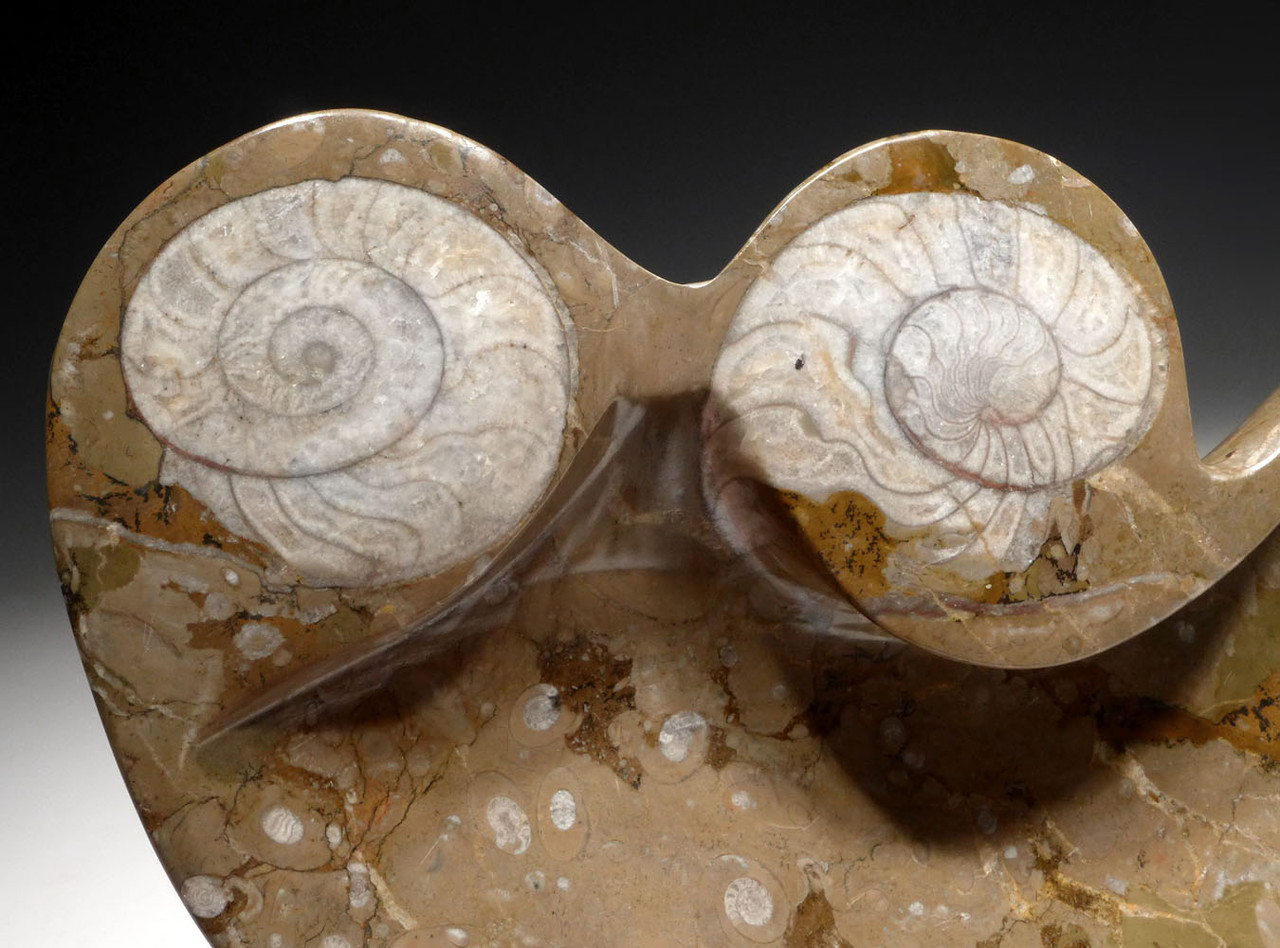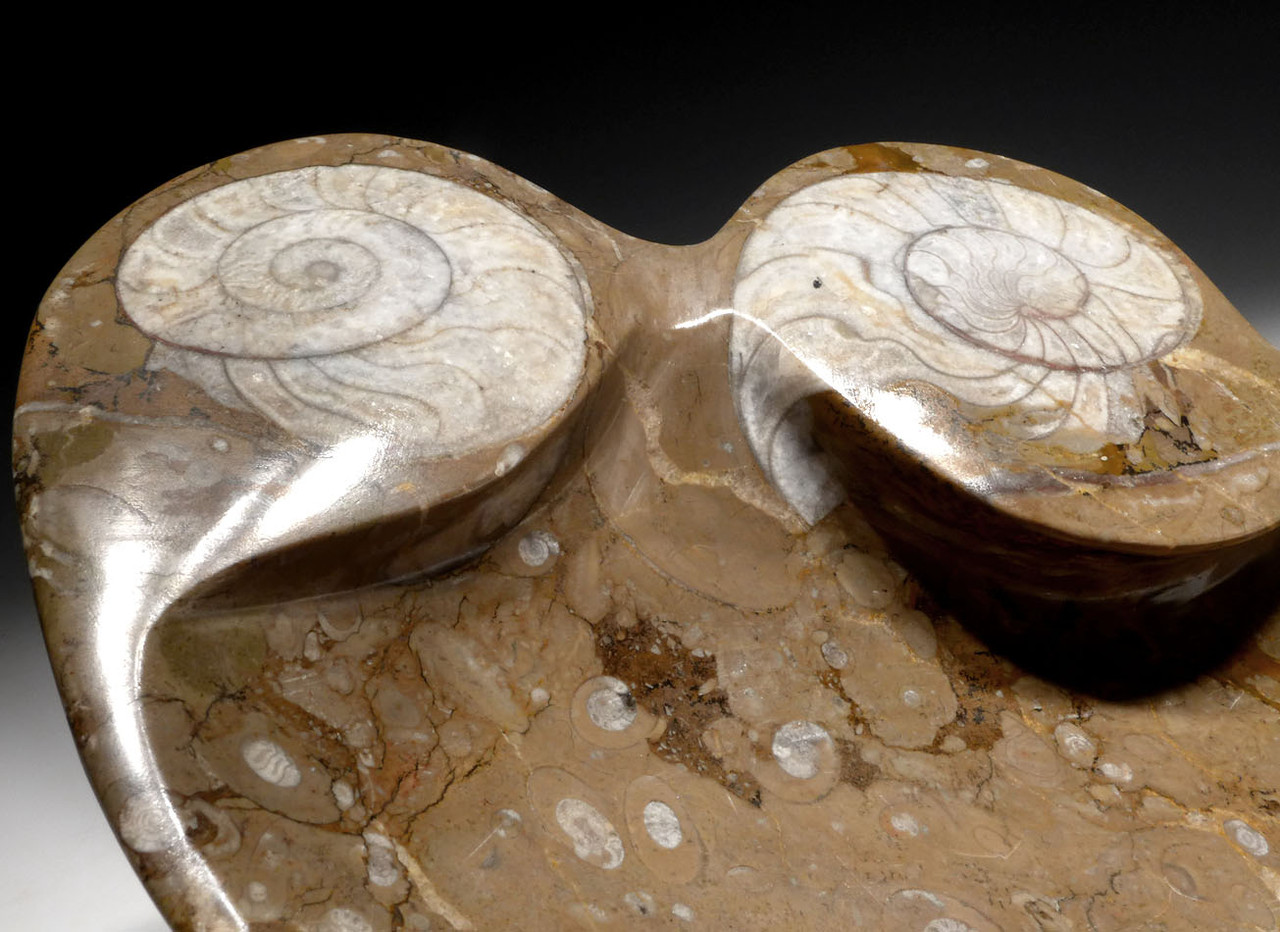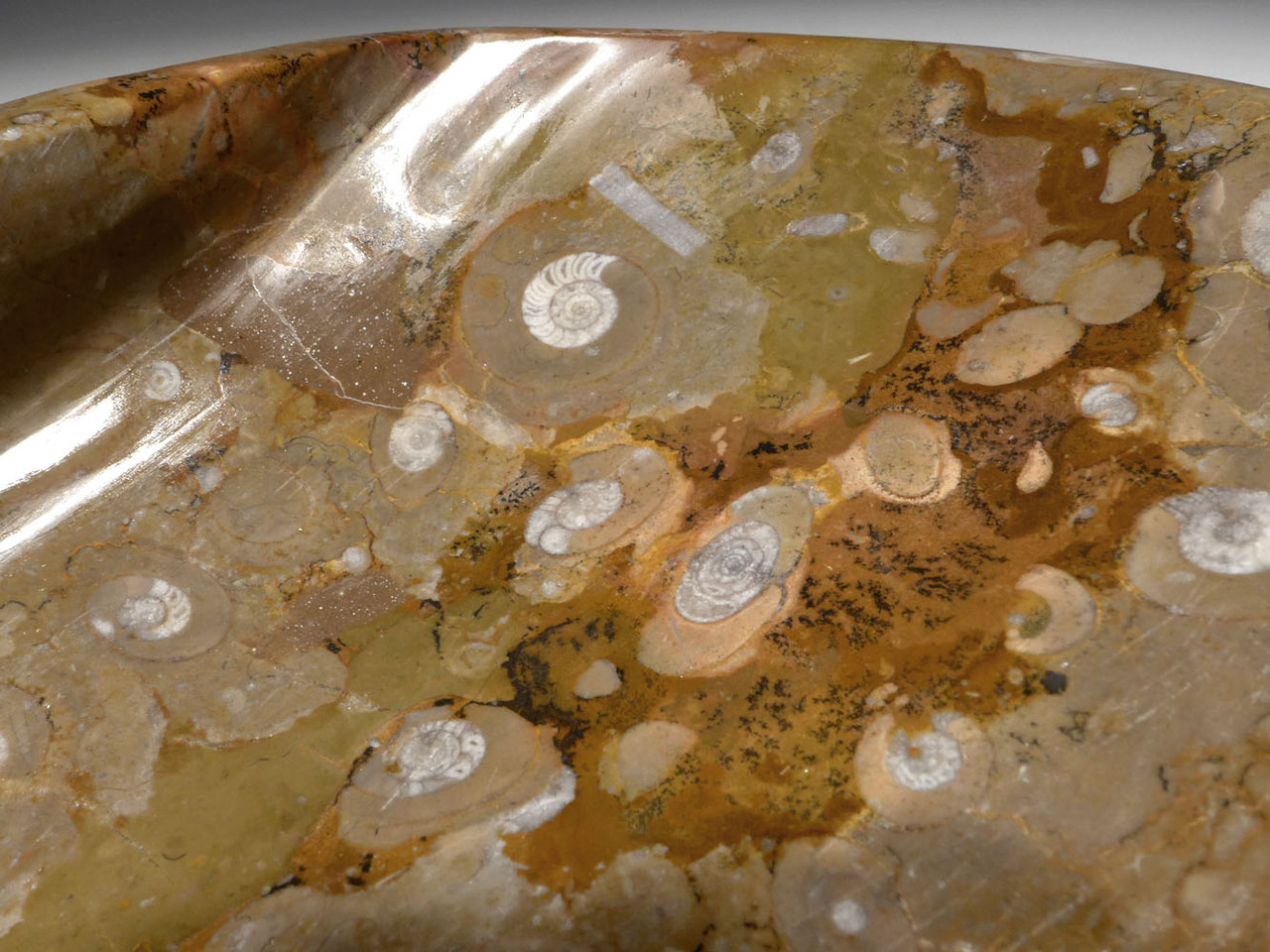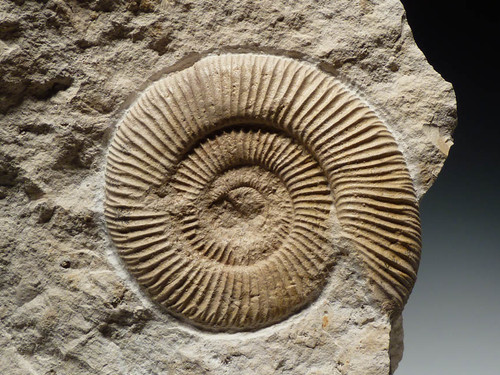Product Description
This is THE MOST UNIQUE AND NICEST fossil goniatite (a type of sea life ammonite fossil that is related to the living nautilus) free-form bowl we have ever had and it is the only one we have to offer. The color is a mix of dark and light golden caramel hues with white calcite filled spiral goniatite fossils. The two large fossil goniatites were NATURALLY-OCCURRING in the large solid block of fossil stone this bowl was hand-carved from. The bowl design was oriented so the goniatites made the rim edge, and the rest of the bowl was carved from there. They are NOT glued on as is typical.
Most definitely, this fossil stoneware ammonite bowl would make an unforgettable house-warming or unique gift that can both, be used in serving, and also displayed on an easel stand when not used. It was hand-crafted out of a single solid slab of fossil-bearing stone. The color and fossils are completely natural and well-detailed.
SEE MORE FOSSIL STONEWARE AND GIFT ITEMS
HISTORY
Prehistoric 'straight' cephalopods include straight ammonoids called ORTHOCERAS. Cephalopod evolution began during the Late Cambrian Period. Cephalopod bodies were predominantly elongate with conical shells. Some of these creatures evolved into semi-coiled forms eventually giving rise to coiled cephalopods like ammonites and nautilii-.
Straight cephalopods were among the most advanced invertebrates of their time having eyes, jaws, and a sophisticated nervous system. These creatures were predators that swam freely using a jet propulsion system by squirting water from their bodies. They had tentacles and ink sacs also much like the present-day squid. Except for belemnites, cephalopods had external shells with hollow internal chambers separated by walls called septa. A tube called the siphuncle, connected the body with the chambers allowing the animal to fill them with water or air, changing its buoyancy in order to rise or drop in the ocean. Only the last and largest chamber was occupied by the living animal. Belemnites were different in that they had internal shells called 'guards' which were covered with the soft, muscular tissues of their bodies. These shells were also chambered but much less complex than the straight varieties of nautiloids and ammonoids.
 US DOLLAR
US DOLLAR
 EURO
EURO
 AUSTRALIAN DOLLAR
AUSTRALIAN DOLLAR
 CANADIAN DOLLAR
CANADIAN DOLLAR
 POUND STERLING
POUND STERLING
















